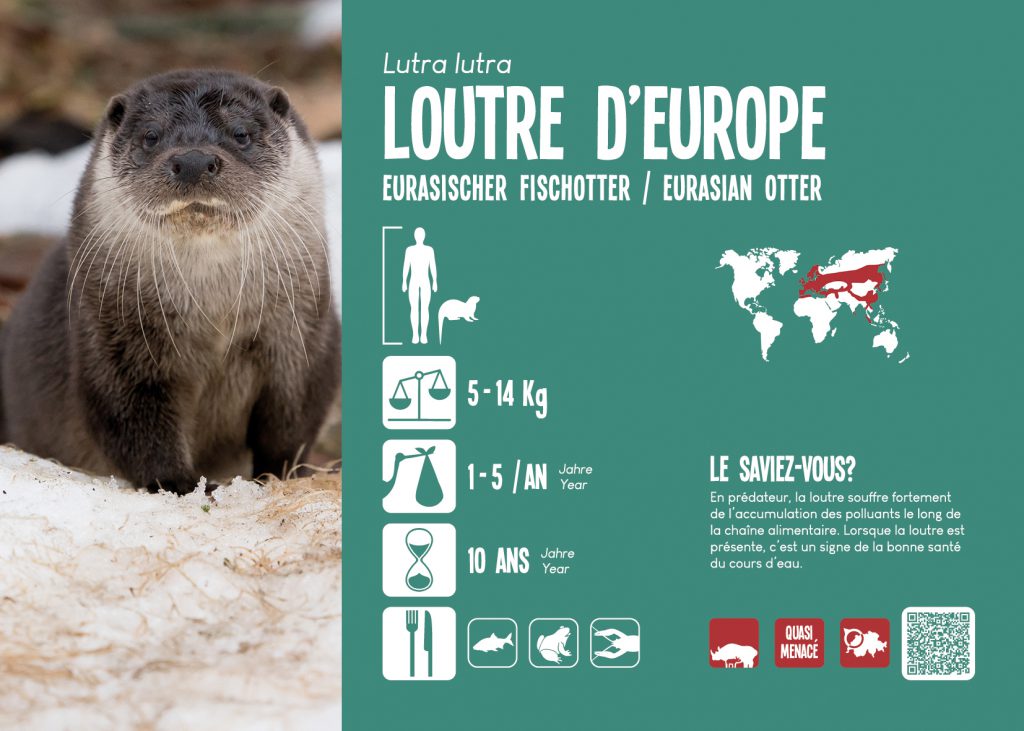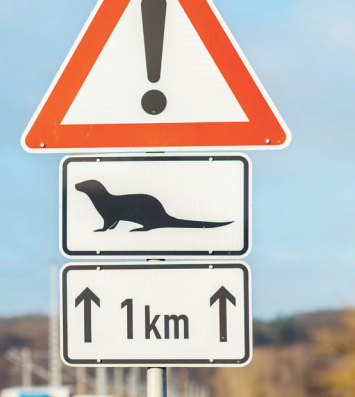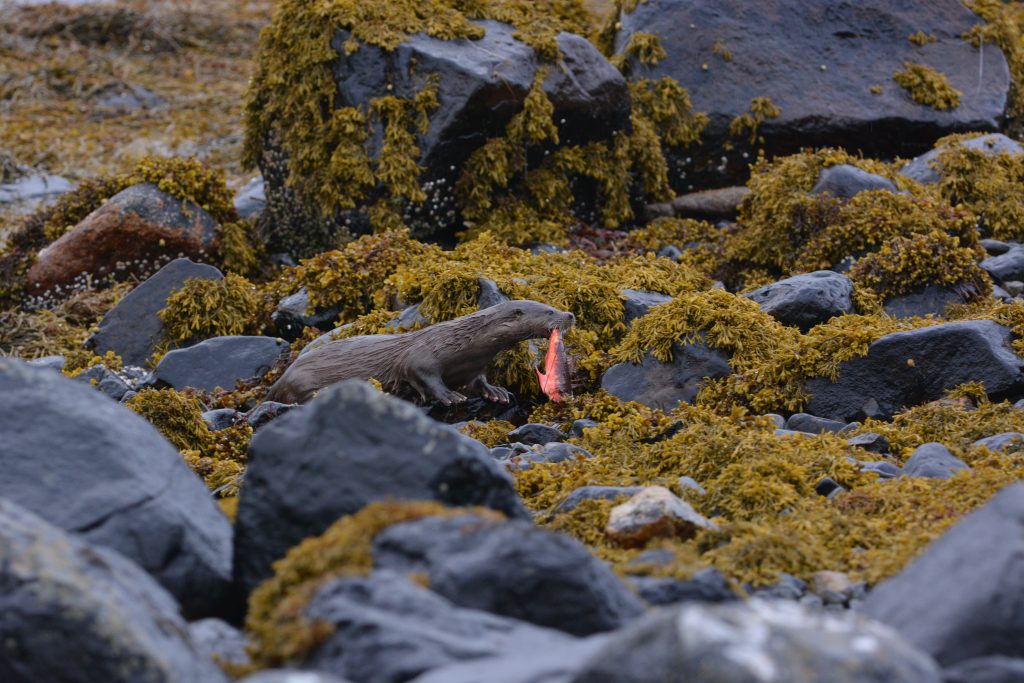
EURASIAN OTTER
Mammalia > Carnivora > Mustelidae > Lutra lutra
Did you know?
As a predator, the otter suffers greatly from the accumulation of pollutants along the food chain. When otters are present, it’s a sign of a healthy river.
Is a pictogram unclear? Click here!
How European otters found their way to MUZOO
Modern zoos carefully select the species they care for. Zoos play an important role in safeguarding and reintroducing species threatened by human activity. These programs have two main aims:
Maintain genetically diverse populations of healthy animals through exchanges between zoos and, as part of conservation programs, guarantee the reproduction of endangered species to release individuals back into the wild.
The Eurasian otter is almost threatened worldwide. In Switzerland, it is considered critically endangered. Disappeared in 1990, it is making a timid comeback.
The main causes of the European otter’s disappearance, in addition to its direct destruction prior to protection, are extensive river development (canalisation and burial), environmentally unfriendly hydroelectric infrastructures, ecosystem pollution and road traffic.
So much so that the Swiss foundation ProLutra has launched a road awareness campaign.

Despite these difficulties, the European otter is highly adaptable. By 2021, the Otter Advisory Service, affiliated to the Swiss Wildlife Mapping Centre, estimates that twenty-two European otters will be living in Switzerland.
We can all contribute to a better cohabitation with the European otter, for example by supporting institutions such as MUZOO or Prolutra.
If you see an otter in the wild, you can report it here.
References and more information on trace identification here.
MUZOO’s animal handlers can recognize individuals, can you? Are you up to the challenge?
MUZOO is home to a pair of European otters. The two individuals are the same age: two years.
Although the size difference between females and males in the European otter does not allow us to distinguish them with certainty, at MUZOO the male is taller but also stockier.
These two differences make the female more agile, so you’ll be able to observe her more often climbing easily onto ledges and other enclosure features.
In terms of swimming styles, the male spends more time on his back, while the female makes rapid movements with her front pasterns, as if she were “waving.” And, as with all mammals, females have teats, which you can try to observe while swimming on their backs.
Both individuals also have certain preferences for areas of the enclosure. For example, you’ll find it easier to observe the female near the large trunk on the islet in the lower part of the enclosure.
Now that you know how to recognize the two European otters, move on to the grey otter enclosure, where the exercise won’t be so easy!
